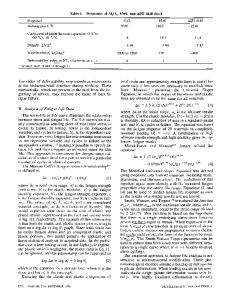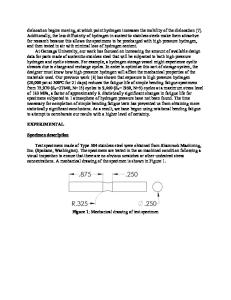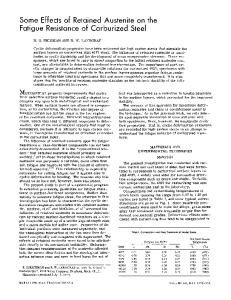The effects of rib shape and slit on fatigue properties of orthotropic steel decks
- PDF / 963,044 Bytes
- 9 Pages / 595.276 x 790.866 pts Page_size
- 20 Downloads / 270 Views
RESEARCH PAPER
The effects of rib shape and slit on fatigue properties of orthotropic steel decks Koichi Yokozeki 1
&
Tomonori Tominaga 1 & Chitoshi Miki 2
Received: 19 February 2018 / Accepted: 6 November 2020 # International Institute of Welding 2020
Abstract Orthotropic steel decks are composed of comparatively thin steel plates (as thin as 6 mm) that deform in the in-plane and out-ofplane directions at longitudinal-to-transverse rib connections in response to vehicle loads. Since such deformations can change as the load positions move, local stress directions can also vary such that hot spots along the weld toes are moved and the relationship between the load position and hot spot stress becomes complex. Furthermore, the deformations will differ depending on the specific type of connection. The present work investigated the effects of rib shapes and slits (that is, cut-outs) on the fatigue properties of such connections by calculating structural hot spot stresses at various connections by finite element analyses. The hot spot locations along weld toes were determined to vary depending on the load position, the longitudinal rib shape, and the presence of slits. It was also found that the load positions associated with maximum and minimum hot spot stresses at slit connections tended to be eccentric relative to the center axes of the evaluated ribs. Keywords Structural members . Bridges . Fatigue strength . Computation . Stress analysis . Weld toes
1 Introduction Orthotropic steel decks are lightweight compared to concrete decks and are used in many long-span bridges and urban expressways. These steel decks are also used in the rehabilitation of bridges by replacing deteriorated concrete decks, and the demand for these structures is increasing [1]. However, numerous fatigue cracks have been detected in orthotropic steel decks [2, 3], especially at connections between longitudinal and transverse ribs. As an example, inspections of urban expressways in Japan have found close to 10,500 cracks, approximately 40% of which appeared at longitudinal-totransverse rib connections [4]. Although several different connection types have been developed in previous studies [5–8], all such designs continue to exhibit fatigue cracks. Orthotropic steel decks are composed of comparatively thin, flexible steel plates (as thin as 6 mm) and are directly Recommended for publication by Commission XIII - Fatigue of Welded Components and Structures * Koichi Yokozeki [email protected] 1
Nippon Steel Corporation, Chiba, Japan
2
Tokyo City University, Tokyo, Japan
subjected to vehicle loads. These plates are readily deformed in the out-of-plane direction [9], such as via torsion and distortion of the ribs [10, 11]. The deformed longitudinal and transverse ribs are constrained by one another at the connections, and this induces three-dimensional in-plane and out-ofplane deformations of the ribs. Since such deformations can change as the load positions move, the local stress directions can also change such that the stre
Data Loading...











